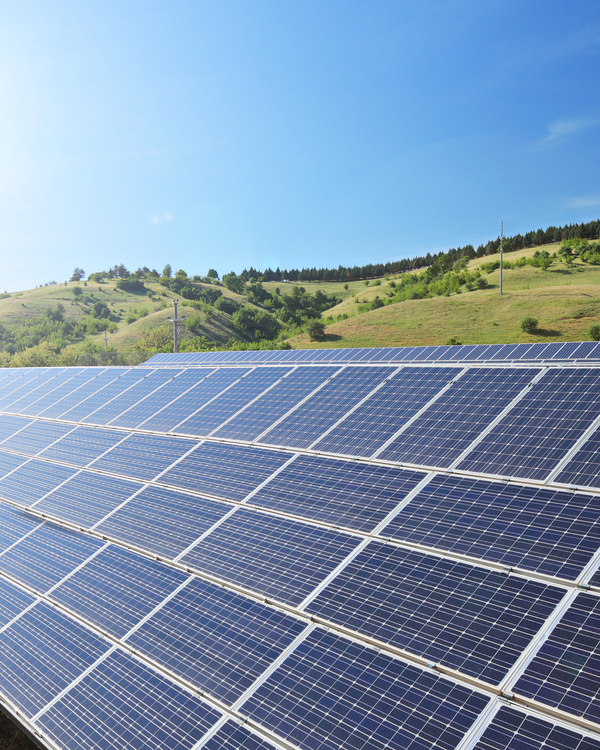Our climate strategy for Swisscanto investment products - an interim summary
Since 2020, our actively managed Swisscanto investment products that invest in traditional assets have been provided with specific climate targets. After four years, we can look back on a pleasing development and are making a few adjustments to our product portfolio.

The commitments made by countries under the Paris Climate Agreement have a significant impact on the investment landscape. On the one hand, they create opportunities for investors to put their money into companies that focus on renewable energies, energy efficiency and low-carbon technologies. On the other hand, they also harbour transition risks. These include stranded assets in particular. These are assets that lose value prematurely or are no longer profitable due to technological, economic, regulatory or environmental changes. In the debate about climate change and the transition to a low-carbon economy, the coal, oil and gas industries, for example, are increasingly coming under pressure.
Setting a price for CO2 through the introduction of emissions certificate trading represents a further transition risk. Affected companies must purchase certificates to be allowed to emit CO2. The greater the demand for certificates, the higher the price. The latter has risen significantly in recent years. This has a significant impact on the capital costs of companies that are heavily dependent on fossil fuels. At the same time, a rising CO2 price incentivises companies to invest in low-carbon technologies and renewable energies, as these become more competitive compared to fossil fuels. Companies that invest in these areas at an early stage could potentially benefit from lower operating costs and an improved competitive position in the long term.
Due to the risks and opportunities arising from climate change and the transition to a low-carbon economy, we decided in 2020 to align our investment activities in actively managed investment products (investment funds and investment groups) in traditional asset classes with a <2 degree target or partially with the 1.5 degree target in line with the Paris Climate Agreement. This means reducing the CO2e emissions of our investments by at least four per cent each year for the <2 degree target. For "Sustainable" products (investment funds and investment groups), the reduction rate is at least 7.5 per cent per year for the 1.5 degree target. The "Swisscanto (LU) Bond Fund Responsible Emerging Markets Opportunities" fund was exempted from this policy.
The basic principles of our climate strategy
- Our top priority is to optimise the management of the client assets entrusted to us in terms of their risk/return profile. In doing so, we also include opportunities and risks arising from climate change in our investment decisions. However, if compliance with climate-related portfolio requirements leads to unfavourable risk-return profiles in our portfolios, the risk-return aspect takes priority.
- With investment stewardship and capital allocation, we have two tools at our disposal with which we can integrate climate-related aspects into portfolios. Through dialogue with company management and by exercising voting rights, we can call on companies to formulate and implement effective CO2e reduction targets. On the other hand, we can underweight investments in companies and countries with high greenhouse gas emissions without their own reduction plans in our portfolios or replace them with investments in CO2e-efficient companies and countries with ambitious reduction targets.
Where does the market stand today?
Our model of a reduction pathway to lower the CO2e intensity in the relevant Sustainable and Responsible product lines is based on the assumption that the market is moving towards climate neutrality. According to current analyses by the Intergovernmental Panel on Climate Change (IPCC) and other scientific institutions, the current national climate plans submitted as part of the Paris Agreement (Nationally Determined Contributions or NDCs) are unlikely to be sufficient to achieve the "well below 2 degree target". In emerging countries in particular, decarbonisation will take longer due to technological backlogs, a lack of financial resources and, in some cases, a lack of political will. The emerging economies are continuing to record an increase in greenhouse gas emissions, while the industrialised countries are recording a slight decline (see chart).

What does this development mean for our strategies?
Operating portfolio management while maintaining a drawdown path requires continuous development and the integration of new findings into the investment process. Looking back, we anticipated various challenges, while we were unable to anticipate other aspects. In particular, we overestimated the CO2e reduction contribution made by the markets. Today, the achievement of portfolio climate targets must largely come from the allocation of capital within the portfolios, while the markets (benchmarks) often make a negative contribution. In addition, the decarbonisation of countries is progressing relatively slowly.
Managing the reduction path via capital allocation is now reaching its limits in strategies with a narrow investment universe. A climate target is easier to achieve in broadly diversified universes with a lot of dispersion and extreme values than in a narrow universe with only minor differences in emissions data. In universes with few emitters and low dispersion of CO2e intensities, the room for manoeuvre is much more limited. Pure sovereign benchmarks, for example, consist of only a few emitters. This means that there is less room for manoeuvre when allocating capital by overweighting securities with low CO2e intensity and underweighting those with high intensity.
For this reason, we switched the "Swisscanto (LU) Bond Fund Responsible Global Rates" and "Swisscanto (CH) Bond Fund Responsible Global Rates" from the <2 degree target to a "relative CO2e reduction" approach in 2023. This means that the CO2e intensity must be lower than that of the benchmark.
We are also adjusting the following investment products based on these developments:
At the end of May, we will adjust the "Swisscanto (CH) Equity Fund Responsible Small & Mid Caps Switzerland (I)", "Swisscanto (CH) Equity Fund Responsible Small & Mid Caps Switzerland (II)" and the "Swisscanto AST Equities Responsible Small & Mid Caps Switzerland" from the <2 degree target to a relative CO2e reduction approach. The climate target can still be achieved with a strongly defensive portfolio. However, the target is no longer realistic with a cyclical or very cyclical portfolio. Continuing to adhere to the climate path would lead to a situation in which we would have to maintain a factor exposure in the portfolio that is not in line with the risk/return profile of the strategy.
The "Swisscanto (CH) Portfolio Fund Responsible Valca" is also to be adapted from the <2 degree target to a relative CO2e reduction approach. The focus on equities from the materials and energy sectors and the focus on inflation-linked bonds in emerging markets means that the reduction path can no longer be adhered to without drastic compromises in the risk/return profile.
As at the beginning of July 2024, we will therefore have seven investment products out of a total of 140 actively managed investment products that do not follow a drawdown path. One fund did not have a drawdown path from the outset. These seven investment products account for 3.7% of our assets in active investment products.
Continuous growth of sustainable product lines
Apart from the adjustments mentioned above, the situation has developed very favourably. Overall, we can draw a positive balance. Due to the growth of sustainable strategies, 20.9% of the assets of actively managed investment products were managed in accordance with the more ambitious 1.5 degree target as at the end of March 2024. In January 2020, this figure was only 8.8%. In the area of passive investment products in the traditional asset classes, 34.2% of assets are currently managed in accordance with the responsible approach for passive investment products and therefore with a CO2e reduction target better than the benchmark. This is an increase of 25.6% compared to the start of 2020.
The demand for sustainable solutions continues. Against this backdrop, we consider it essential to provide transparent information about the challenges involved in implementing sustainable strategies and to emphasise the need to continuously develop the investment process and ultimately the product portfolio.

How do we calculate CO2e intensity?
CO2e intensity can be used to compare the greenhouse gas emissions of small, medium-sized and large companies from different sectors. The CO2e emissions (from Scope 1 and 2) of companies are set in relation to turnover and those of countries in relation to gross domestic product. Environmental pollution per unit of turnover is then used as a measure and benchmark.


